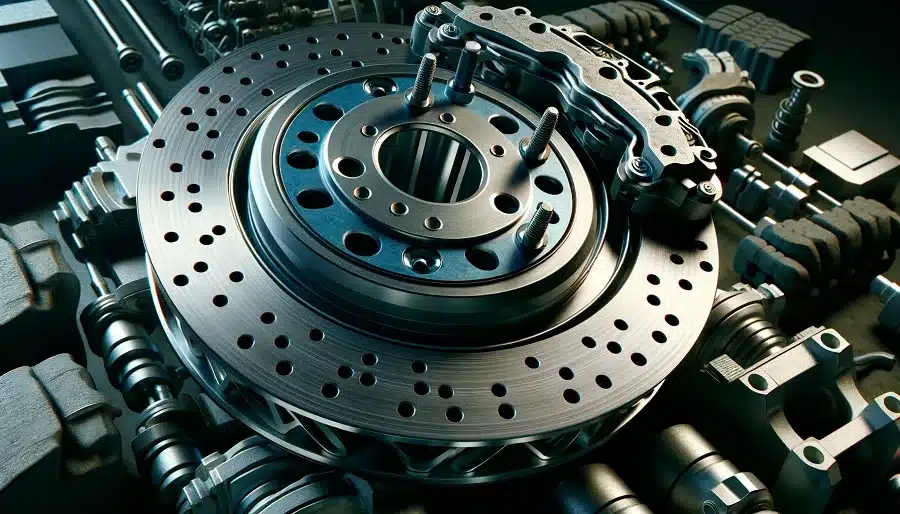While spinning the wheels, known as burnouts, is considered an adrenaline-pumping moment in motorsports, it is a source of concern for drivers in everyday vehicle use. Encountering wheel spin in challenging road conditions, especially for safe driving, is an event to be avoided. This article will provide detailed information on what spinning out is, its causes, and potential damages.
What is Wheel Spin?
Wheel spin refers to the situation where the vehicle’s wheels continue to rotate while the vehicle remains stationary due to reduced grip on the road. It frequently occurs on icy, slippery, or wet surfaces, but can also happen on dry roads due to drivers’ incorrect braking or maneuvering actions.
Wheel spins are also performed intentionally in “show-off wheel burnout” activities. This action, whether accidental or intentional during vehicle start-up, can cause serious damage to the vehicle’s mechanism.
Why Does Wheel Spin Occur?
Wheel spin can originate from two main reasons: weather conditions and vehicle usage, regardless of the vehicle’s position and the slope of the ground, spin-outs can occur on any surface.
Intentional wheel spins are often carried out due to inexperience or for show-off purposes. To perform this action, while the vehicle is running, one foot is kept on the clutch pedal, the engine revs are increased, and then the clutch is suddenly released.
In cases of wheel spin caused by weather conditions, the surface the vehicle is moving on may be covered with slippery materials like snow, ice, mud, or rain. Also, excessively soft grounds where the vehicle can sink also pose a risk of wheel spin.
With this information, it’s evident that wheel spin not only adds an exciting element in motorsports but also plays a significant role in everyday driving safety. Drivers need to drive carefully and consciously to reduce the risk of wheel spin.
Does Wheel Spin Damage the Car?
Contrary to popular belief, wheel spinning can damage not just the tires but also the overall vehicle, a fact unknown to many. The damage caused by wheel spinning is not only visual and superficial; it can also negatively affect the vehicle’s internal mechanisms and performance.
During wheel spin, the friction between the wheels and the ground increases, leading to the tires wearing out much faster and overheating. Such a situation can significantly shorten the tires’ lifespan or cause complete damage.
Moreover, wheel spinning can damage the pressure plate and clutch. As a result of harsh and incorrect usage, these components, which play a critical role in transmitting power from the engine to the wheels, can be damaged, leading to costly repairs.
The effects of wheel spinning on the vehicle are not limited to these; it also leads to increased fuel consumption during start-up and the risk of wear and malfunctions due to the engine being subjected to unexpected high revolutions. These sudden and high revs create an unexpected load on the engine, potentially leading to serious issues in the long run.
While wheel spin might sometimes be unavoidable in challenging weather conditions, when performed for entertainment purposes and regularly, it can have significant negative effects on the vehicle’s long-term health and performance. Therefore, beyond seeing wheel spinning as a fun activity, it’s important to consider the serious damages it can cause to the vehicle.
What needs to be done to prevent skidding?
Preventing wheel spin, especially in slippery and challenging weather conditions, is crucial when driving a vehicle. Wheel spin occurs when the vehicle’s wheels slide uncontrollably on the surface, leading to a loss of control. This can create dangerous situations for drivers. Here are measures to prevent wheel spin:
Be Cautious of Weather Conditions
Remember that your vehicle is more prone to wheel spin during adverse weather conditions such as rain and snow. If you must drive in such conditions, be more cautious and drive slower.
Regular Brake Maintenance
Your vehicle’s braking system plays a critical role in preventing wheel spin. Having an Anti-lock Braking System (ABS) can help maintain control during wheel spin. Therefore, ensure your braking systems are regularly maintained.
Correct Tire Choice
Using season-appropriate tires can make a significant difference in preventing wheel spin. Use summer tires in the summer and winter tires in the winter. Regularly check your tires’ tread depths and air pressures.
Avoid Excessive Speeding
High speeds, especially around corners or on slippery surfaces, increase the risk of wheel spin. Keep your speed under control and drive according to road conditions.
Utilize Traction Control Systems
The Traction Control System (TCS) found in most modern vehicles is effective in reducing the risk of wheel spin. This system prevents the wheels from slipping, ensuring a safer drive.
Preventing wheel spin requires the driver to be attentive and drive their vehicle appropriately according to road conditions. By following the steps above, you can enhance your safety and that of others on the road. Always drive according to weather conditions and do not neglect your vehicle’s maintenance.
What to Do in Case of Wheel Spin
Encountering unexpected situations on the road is inevitable, and there’s always a risk of wheel spin. When faced with wheel spin, it’s crucial to manage the situation wisely and quickly regain control of the vehicle.
Especially in corners, there’s a high possibility of wheel spin, and a common mistake is trying to stabilize the vehicle by using brakes and gas uncontrollably. However, accelerating or braking can worsen the situation by increasing the existing slip and momentum. This leads to the wheels starting to spin faster, intensifying the wheel spin.
In such a scenario, the most rational approach is to lift your foot off the gas pedal and calmly slow down the vehicle. Maintaining steering control is also vital during this process. Using the steering wheel in a controlled manner with minimal movement until the vehicle regains traction will help you stop safely.
These suggestions are fundamental steps to respond correctly during wheel spin and prevent a potential accident.
